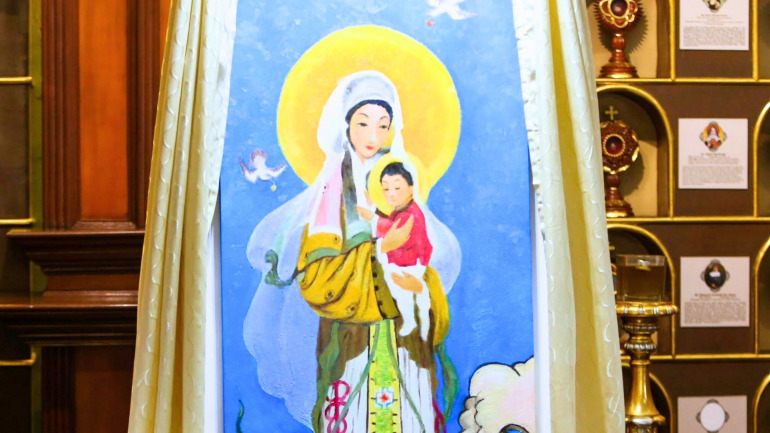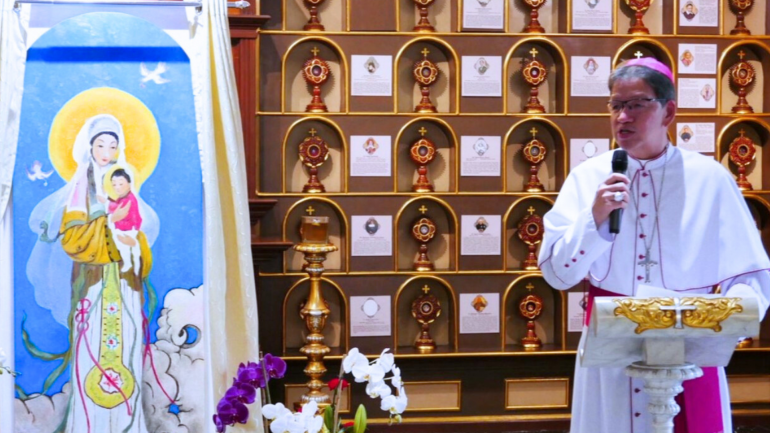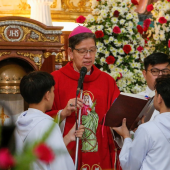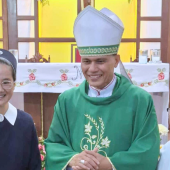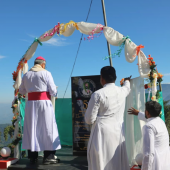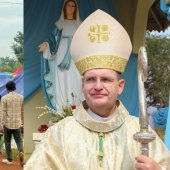Our Lady Queen of China: Honoring the Past and Ensuring the Gift of Continuity for Future Generations
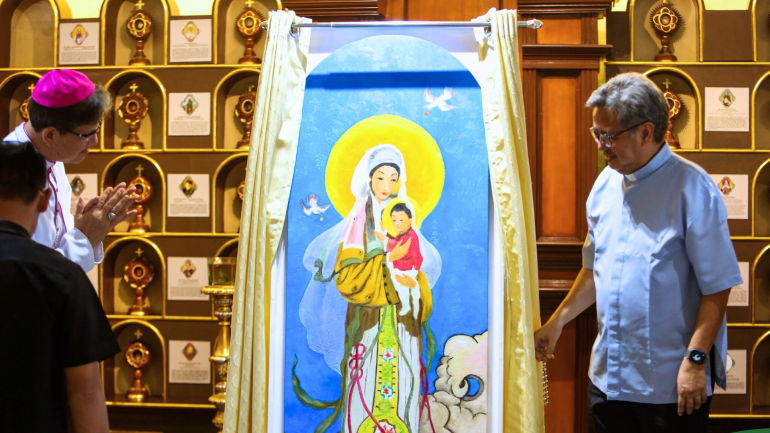
The Filipino-Chinese Catholic community in Cebu City, Philippines, gathered on October 13 to celebrate over seven decades of devotion to the Blessed Virgin Mary under the title of Our Lady, Queen of China.
The highlight of the celebration was the unveiling of a new oil painting of Our Lady Queen of China by noted Cebuano artist Jose “Kimsoy” Yap, Jr. The ceremony took place at the Cathedral Museum of Cebu, a building that once served as a rectory and chapel for Chinese Catholics. From 1952 to 1960, Chinese Catholics in Cebu attended Mass there, celebrated by Jesuit missionaries who had fled persecution in China.
Faith Amid Exile and Renewal
Between 1949 and 1952, the rise of the Communist regime in China brought widespread persecution of the Church. Foreign missionaries were expelled, imprisoned, or forced to flee as the new government sought to suppress what it viewed as counter-revolutionary forces.
Among those displaced were Jesuit priests who had served in China. In response to the pastoral needs of Chinese Catholics in Cebu, a group of lay faithful, supported by the Archbishop of Cebu, petitioned Fr. Paul O’Brien, S.J., then Superior of the Jesuits of the China Mission, to assign a priest for their community.
In 1952, Fr. Miguel Pardinas, S.J., a kind-hearted Mexican missionary expelled from China, arrived in Cebu and began ministering to the community. Two years later, he was joined by Fr. Eugene Luazon, S.J., a French-Canadian missionary who had been imprisoned by the Chinese government.
They were later joined by two more Jesuit missionaries, Fr. Arthur Albert Baur, S.J., and Fr. Francisco Heras, S.J., both also exiled from China.
Building the Faith Community
With the support of lay leaders, the Jesuits established the Our Lady of China Parish and the Chinese Catholic Association (CCCA), naming Mr. Francis Lim as its first president. Under his leadership, the community renovated the ground floor of the Cebu Cathedral, transforming it into a chapel.
The Chinese Catholic population grew rapidly. In 1954, the Jesuits and the CCCA built the Boys Center, which later became the Sacred Heart Academy for Boys. Two years later, in 1956, the Hijas de Jesús (Daughters of Jesus), a Catholic congregation of women founded in Spain, were invited to manage the Sacred Heart School for Girls, strengthening the Church’s educational mission in the area.
In 1959, the Jesuits and the CCCA acquired land and constructed a church dedicated to Our Lady Queen of China. The first Mass was celebrated there on Christmas Eve, 1960, by His Eminence Julio Cardinal Rosales, D.D.
Continuing a Legacy of Faith
In her message at the unveiling, Ms. Joyce Yang, chairperson of the Rite of Blessing and Unveiling Committee, traced the growth of the Jesuit mission, from a personal parish in 1952, to a personal and territorial parish in 1983, and finally to its declaration as the Archdiocesan Shrine of the Most Sacred Heart of Jesus in 2012.
“In remembering these humble beginnings,” Ms. Yang said, “the Shrine Committee felt it was both meaningful and necessary to once again enshrine the image of Our Lady Queen of China. This is not only a tribute to our past but also a gift of continuity for future generations.”
She explained that the new painting by Jose Yap, Jr. offers an inculturated depiction of the Virgin Mary, harmonizing “East and West, embodying Marian devotion, theological symbolism, and cultural identity.”
“The image honors the chapel’s legacy and the ongoing cultural dialogue between Chinese and Filipino Catholic traditions,” Ms. Yang added.
A Living Message of Hope
During the unveiling ceremony, Cebu Archbishop Alberto Uy reminded the faithful that the Blessed Mother’s message of love and hope remains timeless.
“Mary continues to draw people closer to her Son, Jesus,” he said. “Through her intercession, may this devotion inspire us to live our faith with greater love, unity, and compassion.”
(Malou Guanzon-Apalisok is a freelance journalist based in the Philippines who contributes regularly to Radio Veritas Asia.)
Radio Veritas Asia (RVA), a media platform of the Catholic Church, aims to share Christ. RVA started in 1969 as a continental Catholic radio station to serve Asian countries in their respective local language, thus earning the tag “the Voice of Asian Christianity.” Responding to the emerging context, RVA embraced media platforms to connect with the global Asian audience via its 21 language websites and various social media platforms.





